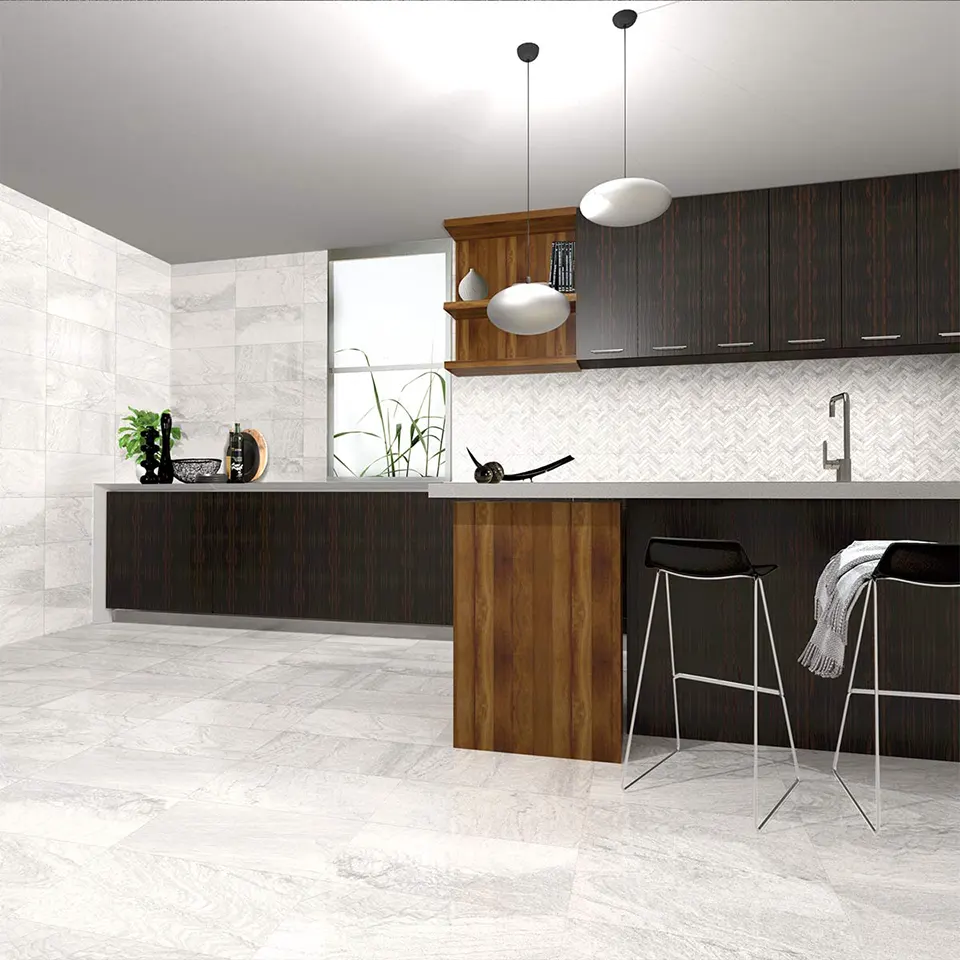Here are the best materials for backsplashes in your kitchen. From ceramic tile to wood, here are the best backsplash materials to choose from.
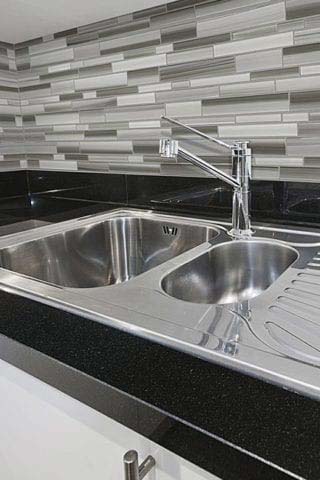
Backsplashes are the decorative focal point of your kitchen, adding visual flair and setting the mood for the heart of your home.
Backsplashes were first installed as a way to protect the wall over the stove or sink from splashes of water, grease, and food spatter. The first backsplashes stood only 4 inches tall for this utilitarian purpose and were made of inexpensive ceramic tile.
It wasn’t until the mid-20th century that designers began to view backsplashes as an ornamental element.
Backsplashes started to stretch taller, cover more space, and become more elaborate, featuring various colors, shapes, sizes, and materials. Design trends ebbed and flowed, ranging from the ceramic accent tiles of the 1980s to the glass subway tiles and stone mosaics that are popular today.
Choosing a Backsplash Design
The most important thing to consider when selecting the design of your backsplash is how it will complement or contrast with your countertop and floor. Depending on your taste, either matching or artfully mismatching the materials and colors can work well to bring everything together. Complementary variations on the prevailing color of the kitchen can create a sleek and harmonious effect, while contrasting materials and colors can add intrigue and excitement.
The strategic placement of a backsplash can produce different effects as well. One that wraps around the entire kitchen radiates continuity, providing a visually satisfying experience and making small spaces seem larger. On the other hand, selectively adding backsplash tiles to certain parts of the kitchen can spotlight those areas effectively and make a striking statement.
After considering how your backsplash will look with the other elements of your kitchen, choosing the material will depend on your personal taste and budget. Let’s take a look at five popular options.
Ceramic

The original backsplash material, ceramic retains its popularity today as an easy-to-maintain, durable, versatile, and often inexpensive choice. Ceramic tiles come in a large array of shapes, colors, and sizes, making them easy to fit in with your vision.
The way they’re applied can lend personality as well, from combining various sizes to employing accent tiles for flavor. Maintaining ceramic is pretty straightforward—all you have to do is clean it periodically.
Cost: Ceramic tiles range in price from $3 per square foot for 4-inch machine-made tiles to $12 and up for handmade tiles.
Glass

Glass tiles offer similar benefits to ceramic in terms of versatility and ease of maintenance. They have the added effect of reflecting light, making your kitchen appear larger and brighter. This option also come in a wide variety of shapes and sizes, ranging from classic square tiles to long, thin bars. Their opacity varies as well, with some tiles offering a crystal-clear translucence and others presenting a more matte effect.
Cost: Glass tiles tend to be pricier than ceramic and are more susceptible to damage (although they’re still quite durable). A popular size for glass tiles is 3-inches by 6-inches, which start around $13 per square foot.
Stone
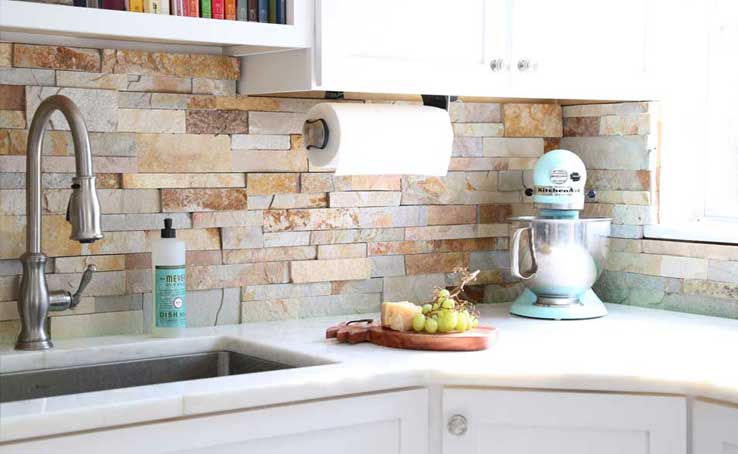
Using natural stone to create a backsplash can give your kitchen a more textured and organic look—although different stones will evoke different moods.
For example, white marble presents a clean, chic elegance, while slate adds earthy character and depth—so there is much variation to consider within this category. Stone is also a more expensive material to work with than ceramic or glass, and, being more porous, it is more difficult to keep pristine, requiring regular maintenance with a PH-neutral cleaner and periodic resealing.
Cost: The price depends on the type of stone; one of the least expensive options, Bianco Carrara, starts around $10 per square foot for 3-by-12-inch tiles.
Metal
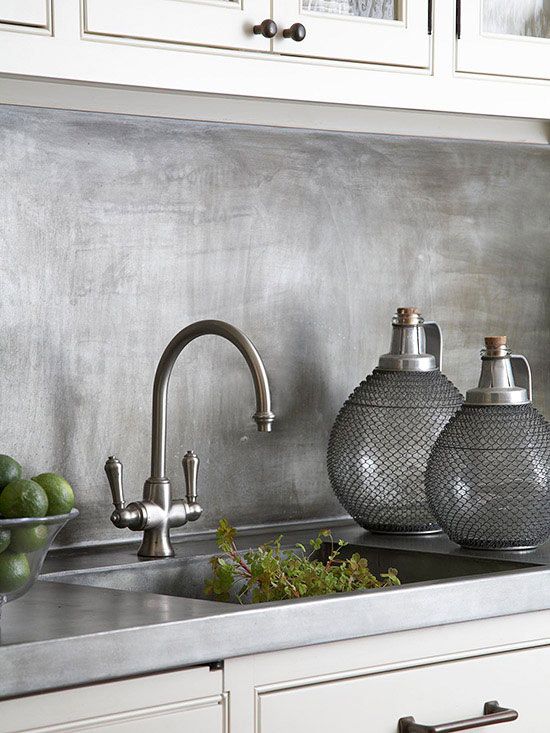
Metal tiles and panels are becoming increasingly popular, and materials like stainless steel, copper, and brass can brighten up the kitchen with their reflective nature while going a long way to elevate your kitchen’s style.
Metal backsplashes come in a variety of sheens and textures, from smooth, brushed metal to shiny, bold geometric patterns. They are easy to keep clean and relatively impervious to damage. The biggest challenge to having a metal backsplash may be the possibility of introducing too many shiny surfaces to the kitchen, as appliances tend to be made of metal as well.
Cost: Comparatively, metal tiles are on the pricier side; stainless-steel tile in a 3-by-12-inch size starts at around $30 per square foot.
Wood
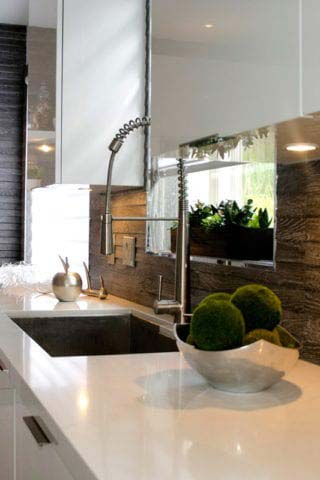
A wood backsplash can effectively complement a minimalist or cottage style, warming up stone countertops and stainless-steel appliances.
Backsplashes made from shiplap or beadboard are very much in vogue and look wonderfully distinctive, but they must be properly sealed prior to installation and carefully maintained afterwards to protect against stains and water damage. Fire codes also typically require clearance between gas burners and flammable surrounding materials so check your local code.
A contemporary option is to use porcelain wood, which is virtually indestructible and therefore easy to clean and maintain.
Cost: Wood plank tiles in the popular 3-by-12 inch size generally cost $3 to $12 per square foot, depending on the type of wood.


